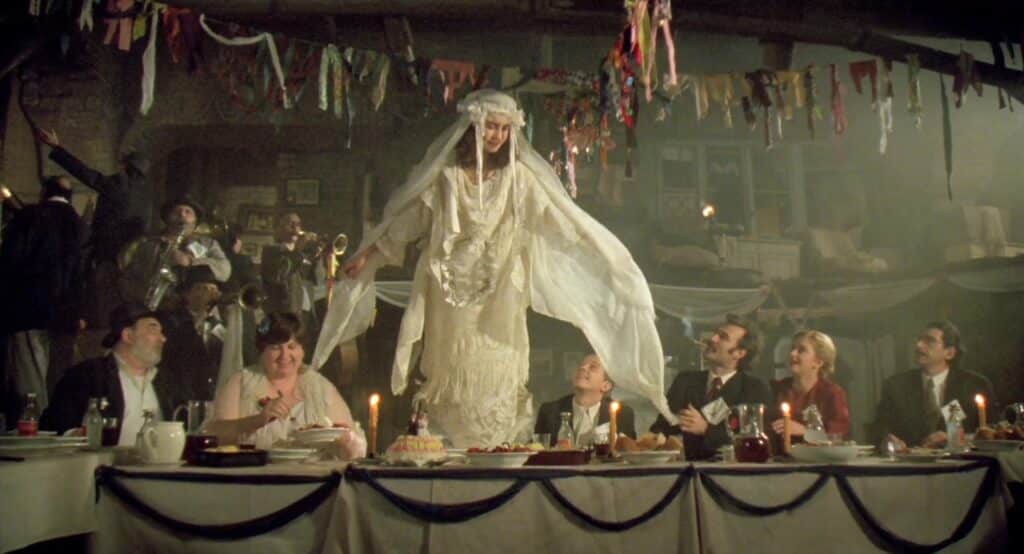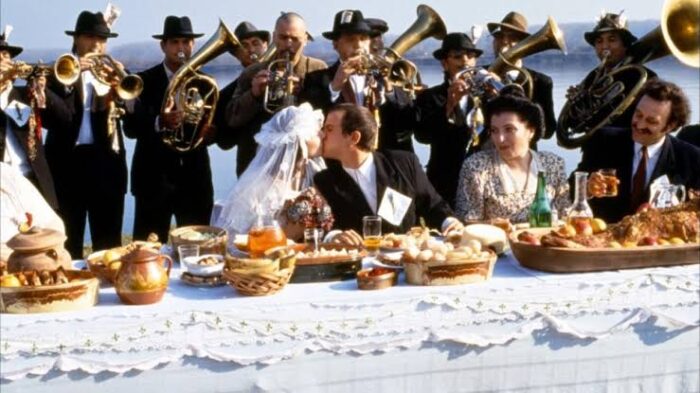Emir Kusturica, a renowned filmmaker, and Dusan Kovacevi co-wrote the screenplay for the 1995 film Underground. It is one of the most well-known works of Yugoslav cinematography that has received international recognition, having won the Palme d’Or at the 1995 Cannes Film Festival. Goran Bregovi, possibly the most well-known musician from the area who has previously contributed to films like La Reine Margot and The Serpent’s Kiss, composed the music for the film.
The film is frequently hailed as a classic, not just for its deft direction and stellar ensemble, but also for its uncommon use of magical realism in photography. Here’s how Kusturica pulled it all off.

Oh, and if this post didn’t cover all of your questions, leave a comment here or send me a message on Facebook chat, and I’ll get back to you. Using the site’s search bar at the top, you can locate more film analysis.
Brief Synopsis of an Underground Film
The narrative centres on Petar Popara Blacky (Blacky) and Marko Dren, two of their closest pals. The two of them were smugglers and burglars who carried out these criminal acts to raise money for the communist uprising in Yugoslavia at the start of World War Two.
During one of the German air attacks, Blacky’s wife passes away while giving birth, and after a brief period of grieving, he decides to wed actress Natalia, whom a German lieutenant named Franz has been courting. While being pursued by the German army, Blacky and Marko storm the theatre and abduct Natalia. Having Marko serve as his best man, Blacky and Natalia get married on a boat before the Germans suddenly surround them. Before Marko is able to successfully save Blacky, Wehrmacht forces seize and torture him.
Marko places Blacky in his subterranean bunker/munitions facility while he is still somewhat unconscious. He decides to lock Blacky (and others who sought refuge there) in the basement by giving them false information because he has fallen in love with Natalia. He continues to spread bogus information about German military advancements even two decades after the war, keeping Blacky hidden while still using them to gain free labour in his guns and ammunition plant.
The unravelling of the entire situation is incredibly dramatic, and many aspects of the narrative closely resemble the dissolution of Yugoslavia.

Magical Realism| What Is It?
The best approach to define magical realism is to say that it is the depiction of a universe in which fanciful events take on a tone that is realistic. For instance, if a ghost showed up during a family supper in a Gothic tale, everyone would flee the room screaming. Someone would just gently ask the ghost to pass them the salt in a book with magical realism.
Cinematically, magical realism is less prevalent as a genre, which makes Underground even more distinctive. Marquez and Rushdie’s writings contain some of literature’s most well-known instances of magical realism.
Too grim for realism| Social critique through magical realism
For this piece, Kusturica chose magical realism for a number of reasons. First, attempting to realistically show issues like World War II or the dissolution of Yugoslavia will inevitably produce a grim (and perhaps disgusting) outcome. Sometimes these grungy features seem so compelling that they completely overshadow the story and even the sentiments the artist was trying to convey. The impact is lessened and the story is given a comedic undertone by magical realism.
For instance, if Blacky wasn’t genuinely impervious to electricity, the scene of his torment wouldn’t be as frightening (due to many years of him working as an electrician before the war).
The same is true of Belgrade’s bombardment site. The fact that Marko, a sociopath, becomes sexily stimulated by the sound of the explosions turns what would otherwise be a sorrowful moment into a comedy in the film.

To be perfectly honest, there are other factors that “soften the shock of reality” than magical realism. Underground features aggressive, powerful, and upbeat music in addition to being a true cinematic masterpiece. Because of this, a good setting is necessary if you want to enjoy this movie to its fullest. Your only choice is to create a home theatre with a great sound system and soundproof panels on the walls since you are unlikely to see it in a theatre these days. The entire viewing experience is given a fresh perspective by this.
Subversion of Utopia| The Strangest Yugoslavia
It’s also important to note that this film accomplished the extraordinary feat of retelling nearly 50 years of Yugoslav history in under three hours. The director has a great fixation on archetypes and symbols in order to do this.
Strong, tenacious, and fiercely loyal to a fault, Blacky embodies the Yugoslav people, making it exceedingly simple for Marko (an archetype of the communist intellectual elite) to take advantage of him. Natalia, who can switch sides multiple times within a single scene, is a symbol of the opportunistic fabric of Yugoslav society. Incompetent and simple to kill, Franz is the prototypical occupier (as viewed through Yugoslav eyes), yet he (somehow) keeps coming back.
The hidden Yugoslavia represented by the underground bunker is protected from the outside world. There are many similarities to Plato’s Cave in this situation. Given that Yugoslavia was once one of the world’s top exporters of weapons, the fact that individuals are making weapons in the bunker is also symbolic (especially proportionally to its size). In other words, these are workers who are housed in the basement who make weapons.
The idea of stolen time is another important point to make. You see, in order to lessen the impact of isolation and maintain everyone’s loyalty, Marko’s grandfather—his insider in the bunker—steals six hours every day. There are numerous possible interpretations of this, but the allegorical representation of the Yugoslavs as being decades behind the rest of the world is unquestionably the strongest (in many aspects).
The meta-cinema in the film Underground
Act II has a subplot concerning the movie being made somewhere in the middle. The purpose of this type of meta cinematography, or “movie within a movie,” is to undermine the entire framework of Yugoslav cinematography before to the separation.
It is the film based on Marko and Blacky’s wartime escapades that is now under production. However, the movie within a movie goes much farther. Underground itself, which is a magical realism film, is purposefully created to be laughably impossible (Blacky is super-strong, resistant to lightning, and possibly even bullets). It is a satire of Yugoslav partisan movies, in which heroes murder Germans in large numbers (sometimes scores, with a single hand grenade). Of course, the film here approaches the idea in an absurdist manner.

The actual actors chosen to portray Blacky, Marko, Natalia, and even Franz are the same real-life actors who play them (thus taking double roles in the movie). This can be seen as the director’s remark on the idea that life often imitates art rather than the other way around.
Last but not least, Marko is inserted into a sizable section of historical footage taken from actual events. This demonstrates that even though this is an alternate past, there are only minor historical differences (in the broader context of events). It also demonstrates how simple it would be to use various Orwellian techniques to influence the course of history.
Underground Film| Final Thoughts
The usage of each of these aspects collectively, rather than individually, is what makes Underground so great. There isn’t larpurlartism (art for art’s sake), as both Kusturica and his main influence, Ivo Andri (the lone Yugoslav to win the Nobel Prize for Literature), appear to detest this idea. It’s a distinctive cinematic experience that also conveys a strong message.
In other words, even people who are not familiar with the relevant historical events might find enjoyment in them. On the other hand, those who have done some research stand to benefit significantly more.
What did you think of the story, themes, and resolution of the 1995 film Underground? Please provide your feedback below.
ALSO READ THIS: Manifest 2018 Movie Explained
